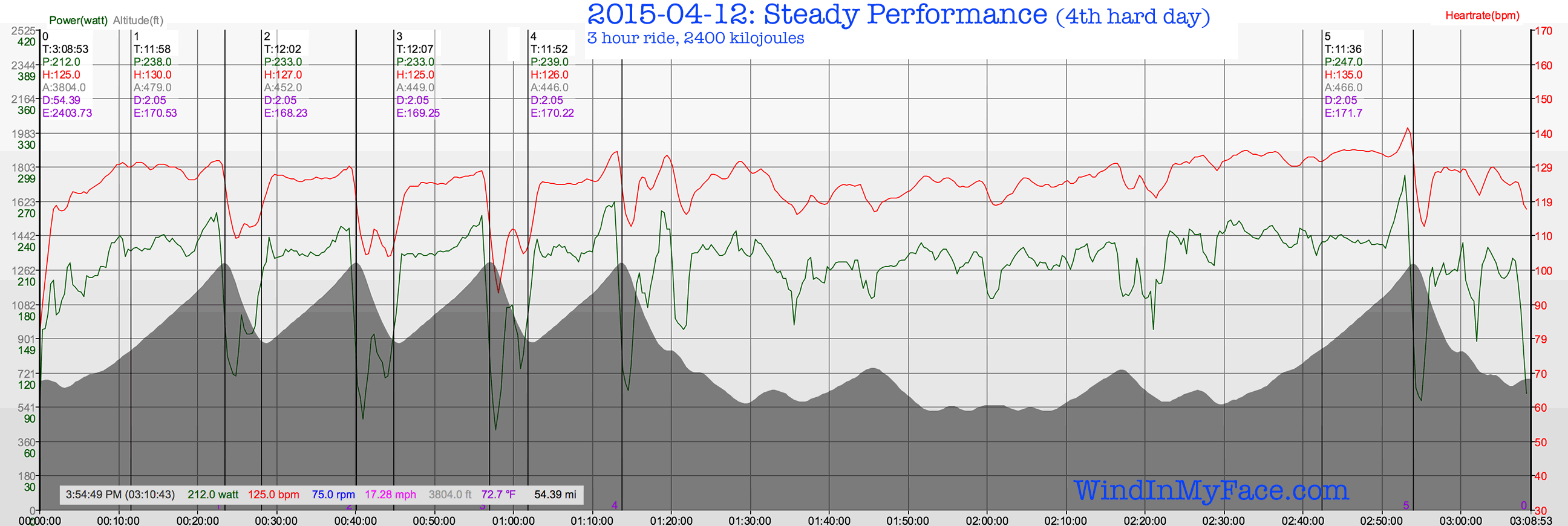Training Overload and Impaired Power Output
After two demanding days of ~3 hour rides (2100 kilojoules then 2400 kilojoules), I headed out on the coast loop (locals: Kings Mtn, Tunitas, Stage Road, West Alpine, Page Mill).
My legs were clearly not recovered, but I wanted to pile on another even harder workout as an overload training cycle, for a total 3 day overload. Then two days of recovery with modest rides of 45 min or so.
The graph shown below is interesting in several ways.
First, it was a cool day and even on the climbs my heart rate averaged only 134 (78% of my 172 max HR). Similar observations as discussed in Training: Repeats with Consistent Power, Heart Rate, Time.
Second, there seems to be a base power level even when fatigued, similar to that I see in a double century. It’s one way of assessing aerobic power output, which is all I can do once the legs get tired (except for short bursts). This power level seems to have a ceiling of about 250 watts, which is just what I observed at the end of the Solvang Spring Double. 230-240 watts is more realistic though. Brief bursts higher than that, but once well fatigued (but with proper hydration and feeding), 250 watts is about all I can muster near sea level (drops to ~220 watts approaching 10,000' elevation).
The foregoing is another reason why leaning out to low body fat can make such a big difference in the Everest Challenge: by that last climb, anaerobic power has fallen off badly with severe fatigue, and so that baseline aerobic power is what yields the power to weight ratio on the last climb—and it’s average power that matters over the race.
Finally, even though my legs were reluctant to generate peak power, there is something very interesting about how a very deep aerobic base feels on such an overload; it’s very different from the early season feeling of being wiped out and totally thrashed by too hard a workload. Instead, the body just reduces output, and this wiped out feeling just doesn’t happen. That for me is one key sign that the aerobic base is highly developed and that intensive anaerobic training should be introduced.

UPDATE: well, a rest day was the plan. But riding a bit on the 4th of 4 hard days, I just kept feeling stronger and stronger, and strongest at the very end of a 3 hour ride. Huh. Training doesn’t always grant such rewards, and such things shall not be denied, so I rode 3 hours, making it 4 hard days of 4, with about 9500 kilojoules (9000 calories) burned over 4 days—trying to bring body fat down.




